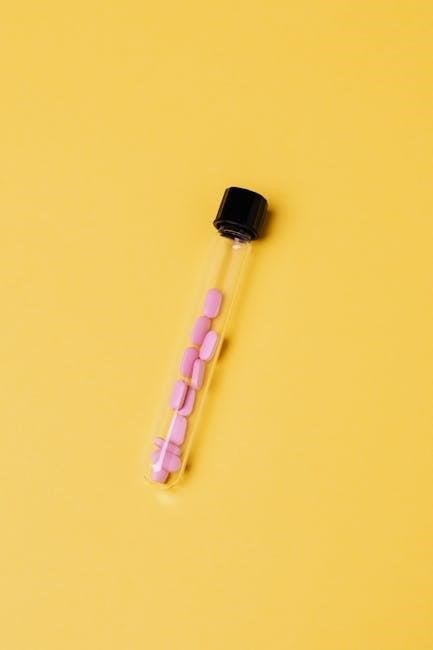Safety Precautions for Trojan T-1275 Battery Removal
Always wear protective gloves and eye protection when handling batteries to prevent acid spills and electrical shocks. Ensure the area is well-ventilated and free from sparks or open flames. Use sturdy lifting equipment to avoid injury, as the Trojan T-1275 battery weighs approximately 85 pounds. Never touch both terminals simultaneously, and keep loose clothing or long hair tied back. If acid contact occurs, flush with water and seek medical attention immediately. Properly neutralize any spills with a sodium bicarbonate solution to prevent corrosion. Avoid overexertion when lifting to prevent muscle strain or injury.
1.1. Personal Protective Equipment (PPE)
Wear heavy-duty gloves, safety goggles, and a face mask to protect against acid splashes and fumes. Ensure all PPE is rated for battery maintenance tasks.
Clear the workspace of flammable materials and ensure good ventilation. Place a non-conductive mat or towel under the battery to prevent acid damage to surfaces.
1.1. Personal Protective Equipment (PPE)
Wear protective gloves, safety goggles, and a face mask to prevent exposure to battery acid and electrical hazards. Ensure gloves are heavy-duty and resistant to chemicals. Safety goggles should have a splash guard to protect eyes from acid splashes. A face mask is recommended to avoid inhaling fumes during removal. Additionally, wear long sleeves and closed-toe shoes to minimize skin exposure. Always inspect PPE for damage before use and ensure proper fit to maintain effectiveness. These precautions are essential to safeguard against potential risks during the Trojan T-1275 battery removal process.
1.2. Preparing a Safe Work Area
Clear the workspace of flammable materials, sparks, and open flames to prevent accidental ignition. Ensure the area is well-ventilated to avoid inhaling harmful fumes. Place a non-conductive, acid-resistant mat or towels under the battery compartment to protect the surface from acid spills. Secure the golf cart on level ground using jack stands to prevent movement during battery removal. Keep a fire extinguisher and a spill neutralization kit nearby. Ensure all electrical systems are turned off and the cart is in neutral gear. Properly label and organize tools to avoid clutter and tripping hazards, ensuring a smooth and safe process.
Tools and Equipment Needed
Essential tools include a wrench or socket set for terminal disconnection, a hydraulic lift or dollies for battery removal, and protective gloves. Use a voltage meter to ensure power is off, and keep a neutralization kit nearby for acid spills. A sturdy mat or towels are recommended to protect surfaces from acid damage. Ensure all equipment is rated for heavy-duty use, as the Trojan T-1275 weighs approximately 85 pounds. Properly secure the golf cart with jack stands before starting work.
- Wrench or socket set
- Hydraulic lift or dollies
- Protective gloves and goggles
- Voltage meter
- Neutralization kit
- Sturdy mat or towels
- Jack stands
2.1. Essential Tools for Battery Removal
The following tools are necessary for safely removing the Trojan T-1275 battery: a wrench or socket set to disconnect terminals, a hydraulic lift or heavy-duty dolly to handle the 85-pound battery, and protective gloves. A voltage meter ensures the power is off, while a neutralization kit addresses acid spills. Additionally, a sturdy mat or towels protect surfaces from acid damage. Ensure all tools are rated for heavy-duty use to avoid damage or injury. Properly securing the golf cart with jack stands before starting work is also recommended for stability and safety.
- Wrench or socket set
- Hydraulic lift or dolly
- Protective gloves
- Voltage meter
- Neutralization kit
- Sturdy mat or towels
- Jack stands
2.2. Recommended Safety Gear
Essential safety gear for removing the Trojan T-1275 battery includes heavy-duty gloves to prevent acid exposure, safety goggles to protect eyes from splashes, and a face mask to avoid inhaling fumes. A fire extinguisher rated for chemical fires should be nearby; Wear non-conductive footwear and avoid loose clothing that could get caught. Use a neutralization kit with baking soda or sodium bicarbonate to handle acid spills safely. Ensure all safety gear is easily accessible before starting the removal process to minimize risks and ensure a secure working environment.
- Heavy-duty gloves
- Safety goggles
- Face mask
- Fire extinguisher (chemical-rated)
- Neutralization kit
- Non-conductive footwear
Preparing Your Golf Cart for Battery Removal
Disconnect the power source, engage the brake, and ensure the cart is on a level surface. This prevents movement and ensures a stable working environment.
3.1. Disconnecting the Power Source
Before starting, switch off the golf cart’s ignition and engage the parking brake to ensure the vehicle is stationary. Disconnect the main power cable from the battery terminals to prevent any accidental electrical discharge. Use a wrench to loosen the cable nuts, then carefully pull the cables away from the terminals. This step ensures your safety while working on the batteries. Double-check that all power sources are disconnected using a multimeter to verify zero voltage. Once confirmed, the cart is ready for battery removal. Always maintain a secure and stable environment to avoid accidents during the process.
3.2. Locating the Batteries
In most golf carts, the Trojan T-1275 batteries are located in the lower compartment, typically under the seat or near the front of the cart. To access them, you may need to remove the seat or open the battery compartment door. The batteries are usually secured in a rack or tray to prevent movement during operation. Ensure the cart is on a level surface before attempting to locate or remove the batteries. For specific models, consult the manufacturer’s manual or look for labels indicating the battery compartment. Proper access ensures safe and efficient battery removal.
Disconnecting the Batteries
Disconnect the negative terminal first to prevent short circuits, followed by the positive terminal. Ensure all connections are loose before attempting to remove them completely.
4.1. Disconnecting the Terminals
Start by disconnecting the negative terminal (-) first to prevent short circuits, using an appropriately sized wrench or pliers. Gently loosen the terminal bolt before pulling the cable off. Next, disconnect the positive terminal (+) following the same method. Ensure both terminals are completely free from any cables or connectors. Inspect the terminals for corrosion or damage and clean them if necessary. Avoid touching both terminals simultaneously to prevent electrical shock. Once disconnected, secure the cables to prevent accidental reconnection. Double-check that no power is flowing through the system before proceeding with further removal steps.
4.2. Disconnecting the Main Power Cable
After disconnecting the terminals, locate the main power cable connected to the battery. Use an appropriate wrench to loosen any bolts securing the cable. Gently pull the cable away from the battery post, ensuring it is completely free. If the cable is stuck due to corrosion, carefully clean or apply penetrating oil. Avoid using excessive force, which could damage the cable or battery. Once removed, inspect the cable for wear or damage and replace if necessary. Secure the disconnected cable to prevent accidental contact with the terminal. This step ensures the battery is isolated from the golf cart’s electrical system.

Removing the Batteries
Lift the Trojan T-1275 battery carefully, as it weighs approximately 85 pounds. Use a cart or assistance to avoid injury. Place the battery on a protected surface to prevent damage.
5.1. Lifting and Handling the Battery
Lift the Trojan T-1275 battery carefully, as it weighs approximately 85 pounds. Use a sturdy lifting cart or dolly to avoid strain. Always maintain a firm grip and keep the battery upright to prevent acid spills. If lifting manually, ensure two people assist to distribute the weight evenly. Bend at the knees and lift with leg muscles to avoid back injury. Avoid tilting the battery excessively, as this could cause internal damage or electrolyte leakage. Place the battery on a flat, stable surface after removal to ensure safety and stability during handling.
5.2. Placing the Battery in a Safe Location
After removing the Trojan T-1275 battery, place it in a well-ventilated, dry area away from flammable materials. Position the battery upright to prevent acid leakage and ensure stability. Avoid placing it directly on grass or soil, as this could lead to contamination. Use a non-conductive surface, such as a wooden pallet or plastic tray, to protect the battery from ground moisture. Keep the battery away from direct sunlight and heat sources to prevent overheating. Ensure the area is clear of children and pets to avoid accidental damage or tampering. Proper placement helps maintain safety and preserves the battery’s condition for storage or disposal.

Cleaning the Battery Compartment
Clean the compartment with a wire brush to remove corrosion and debris. Neutralize any acid spills using a sodium bicarbonate solution. Rinse thoroughly with water.
6.1. Removing Debris and Corrosion
Use a wire brush to scrub away corrosion from terminals and surfaces. Remove any dirt, dust, or old acid spills that may have accumulated. Apply a mixture of baking soda and water to neutralize acid residue, then rinse thoroughly with clean water. Ensure all debris is wiped away with a clean cloth or paper towels. Pay special attention to terminal connections, as corrosion can prevent proper reconnection. After cleaning, allow the compartment to dry completely before reinstalling the battery. This step ensures a clean, safe environment for the new or reinstalled battery to function optimally.
6.2. Neutralizing Acid Spills
Immediately contain sulfuric acid spills using absorbent materials like sand or diatomaceous earth. Wear protective gloves and eyewear to prevent exposure. Neutralize the spill by sprinkling sodium bicarbonate liberally over the affected area. Use a stiff brush to work the powder into the spill, ensuring full coverage. Rinse the area thoroughly with clean water and repeat if necessary. Once neutralized, clean the surface with a damp cloth and allow it to dry completely. Dispose of all cleaning materials, including gloves and cloths, according to local regulations. Proper neutralization prevents corrosion and ensures a safe environment for future battery installation or maintenance.

Reinstalling or Replacing the Battery
Place the new Trojan T-1275 battery in the compartment, ensuring correct orientation. Secure it firmly with hold-down hardware to prevent movement. Reconnect terminals carefully, positive first, then negative, to avoid sparks.
7.1. Installing a New Battery
Position the new Trojan T-1275 battery in the compartment, ensuring proper alignment with the terminals facing the correct direction. Secure the battery using the original hold-down hardware or equivalent to prevent movement during operation. Tighten all bolts firmly to ensure stability. Reconnect the positive terminal first, followed by the negative terminal, to avoid sparks. Double-check all connections for tightness and ensure the battery is level. Refer to the manufacturer’s manual for specific torque values. Once installed, verify that the battery is properly seated and all safety precautions have been followed. Test the cart’s electrical system to confirm proper function.
7.2. Reconnecting the Batteries

Reconnect the batteries by first attaching the positive terminal, followed by the negative terminal, to prevent short circuits. Ensure all connections are tight and secure. For multiple batteries, reconnect the series and parallel cables as per the original configuration. Double-check that all terminals are clean and free of corrosion. Once reconnected, verify the voltage using a multimeter to ensure proper electrical flow. Test the cart’s electrical system to confirm everything functions correctly. If installing multiple batteries, ensure they are balanced and charged evenly before use. Proper reconnection is critical for optimal performance and longevity of the Trojan T-1275 batteries.
Proper Disposal of Old Batteries
Recycle old Trojan T-1275 batteries at certified centers to prevent environmental harm. Neutralize any acid spills and ensure batteries are securely packaged for safe transportation to recycling facilities.
8.1. Recycling Options
Recycle Trojan T-1275 batteries at certified facilities to ensure eco-friendly disposal. Many auto repair shops, recycling centers, or specialty battery recyclers accept lead-acid batteries. Contact local or national recycling programs for drop-off locations. Battery Wholesale Inc. and similar providers often assist with proper recycling. Neutralize acid with baking soda before transport, and secure batteries in protective packaging to prevent leakage. Recycling helps recover valuable materials like lead and reduces environmental contamination. Always follow local regulations and guidelines for battery recycling to promote sustainability and responsible waste management.
8.2. Environmental Considerations
Properly dispose of Trojan T-1275 batteries to prevent environmental harm. Lead-acid batteries contain hazardous materials like lead and sulfuric acid, which can contaminate soil and water if not handled correctly. Recycling is essential to recover valuable materials and reduce landfill waste. Use licensed recycling facilities that specialize in lead-acid battery disposal to ensure safe processing. Check local regulations for specific guidelines on battery disposal and recycling. Prevent illegal dumping, as it poses serious environmental risks. By recycling, you contribute to a sustainable environment and conserve natural resources. Always prioritize eco-friendly practices when handling battery disposal.




